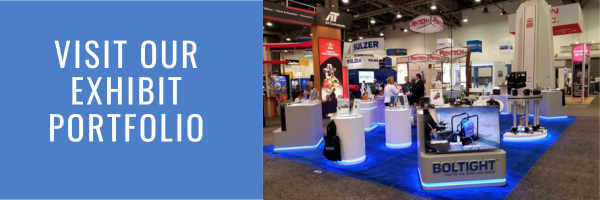Those in charge of marketing and/or sales typically feel the pressure of justifying their company’s participation at trade shows. Therefore, planning the event may revolve around the ability to calculate the return on investment (ROI). If trade show return on investment is the key metric to determine if the show is successful or not, some key objectives may be missed that cannot be measured by a money out/money in equation.
In fact, if an acceptable trade show return on the investment is the desired outcome, it may sway some to plan objectives at the show that can only be measured by an ROI calculation. Therefore, more intangible but beneficial objectives may not be planned for and thus missed. Instead of having the outcome of ROI determine the objectives at the show, why not have the objectives drive the outcome and use another way of measuring trade show success?
Return on Objective
Return on Objective (ROO) refers to the use of non-sales metrics to gauge the impact of marketing activity. Depending on a company’s product or service there are activities, events, and processes that lead to money coming in the door. Determine what those are and plan to attain those objectives.
Setting Trade Show Objectives
What does success at a trade show truly look like for a company? That is more than likely determined by many stakeholders. Start there. Get input from everyone that is looking for events to fuel their results. Include salespeople and talk to key customers as well. You may find that there are some intangibles that are extremely important that lead to sales, new distributors, or whatever they may be deemed important. Ask your customers how they found you and/or what led them to working with you.
Typical event goals like revenue, attendance, lead generation, branding, education, engagement, satisfaction, etc. are still to be considered. Learn more about setting trade show objectives.
Measuring Return on Objective for a Trade Show
Once objectives are determined, there are key performance indicators (KPI) that you can use to determine if they are met. Lead generation is obvious. However, if lead generation is a key objective, staff the exhibit with people that are skilled at generating leads. Staffing of an exhibit is often overlooked. It may seem to make sense to send people that won’t be missed as much at the office or in the field. That can be a big mistake. Send those that have a stake in the outcome.
Web traffic during or after the show is an indicator that a positive impact has been made. More traffic and impressions on a company’s social media platforms is another. Drive that by having exhibit staff connect with guests on various platforms and by using hashtags. Event polls filled out by attendees can help analyze satisfaction and knowledge gained about products and services.
Trade Show Return on Investment Still Drives the Business
Trade show return on investment remains the outcome that fuels the income for your company. It’s just that by focusing on only ROI at a trade show, key objectives may be missed that ultimately lead to sales. By identifying these objectives and finding a way to measure them, trade show participation can become a more vital part of how your company generates business.
To learn more about DIAMOND LEVEL SERVICE
and to speak with owner, Craig Neal:
Go to DIAMOND LEVEL SERVICE
Call 386-527-3373
Email craig@diamondlevelservice.com
Visit DIAMOND EDUCATION to learn more about the trade show industry or click the links below.
Trade Show Shipping Costs - Tips to Stay Within Your Budget
What is Material Handling Cost?

